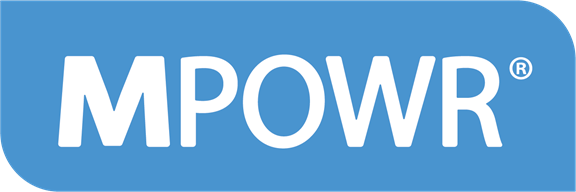
Technology for Strategy Consultants: Are You Using the Right Tools?
October 8, 2020
A One Page Strategic Plan
October 20, 2020Optimize Your Costs Now for the Future Using People, Processes and Technology

The way to look at really optimizing your costs starts with a well-known framework of understanding the three elements that most affect your business and how each of those come together to help you realize your strategic goals. As technology plays a bigger and bigger role in both our personal and professional lives, it changes how we interact both internally and externally with colleagues and customers. But, if we just rely on technology to ‘solve all our problems we’ll miss the boat. Successful technology deployment is as dependent on the ability of the other two elements (people and processes) to properly support it, as they are dependent on technology to improve productivity and effectiveness.
Also, when we think about optimizing our costs, it’s important to note that we’re not always talking about cost avoidance or cost-cutting. We’re talking about ensuring your resources are dedicated to your strategic direction so you can accomplish your long-term goals. So… let’s unpack those three elements and look at how working with all of them together can help you optimize your costs to recover your business going forward.
Let’s start with everyone’s favorite, technology.
Three Planning Goals In Three Months [How to get a jumpstart on transformative strategy]
Technology
Technology has led us to some amazing places in the last 25 years. The computing power of what is now in a single hand-held device used to be housed in a climate-controlled building. That alone has implications that are enormous. One of the most important of those implications is the shift of information and knowledge. Previously kept amongst only those at the top of an organization, this new world of distributed knowledge translates to a much more empowered workforce. And, that shift has a direct effect on how you lead departments, cross-functional teams, and the organization as a whole – both from a process and people perspective. Technology has become a great equalizer in the workforce. As a result, having the right people with the right skills to choose, apply, and manage the technology is critical to maximizing your effectiveness. Technology without talent gets you nowhere. Additionally, if you apply a tech solution without first ensuring you have laid out a complete framework for where and how it will be applied, you can run into real issues.
An example of this would be getting new software that allows you to manage your top-line priorities and critical success factors so there is transparency throughout the organization towards strategic goals. If people aren’t involved in ensuring data gets into the software if processes aren’t involved in understanding how you will structure your strategic goals before you manage them with the software, the information you receive will be subject to the old rule, ‘garbage in, garbage out”. People and the processes to support what you are trying to manage must be in place to realize meaningful efficiencies and information with a new software solution.
Processes
For processes, let’s use an example in finance. Let’s say as you grow, you think about implementing an automated system for your accounts payable function. You want to do this because certain actions are repetitive and applying technology to those processes allows you to achieve efficiencies, especially at scale. As your business grows, your first step should be to take a look at efficiencies you could achieve by eliminating excess steps. And let’s say, after analyzing the current process, you are able to eliminate at least 5 or 6 ‘touches’. You will be automating a more streamlined process than if you just implemented a software solution without asking yourself, “Are each one of these touches necessary?” As you think about applying your people resources, think about involving not only those who understand software but as important, those who really understand the specifics of accounts payable. The experts in accounts payable will be those you turn to who can add the detail about the overall processes. Examine where you can achieve efficiencies and do those first. Make sure you understand what makes the most sense to keep, what makes the most sense to automate, and what makes the most sense to eliminate.
People
Because a big part of our economy is tech, the first assumption is that the workforce must also be tech. And while we need to make a workforce transition to those who can really leverage tech, you still need the people that can paint a picture for others as to how the technology can be applied effectively. It’s about having the right skill sets to perform a function that can be optimized with tech. As in the example above, an accounts payable automation system needs both tech people and finance people. Another example could be a warehouse automation system. You should have employees who understand both warehousing and logistics functions in order to leverage the technology appropriately. And both together need to have a vision for how the business will need to scale and grow for the future. That vision is key in guiding your overall strategy and organizational direction. Otherwise, you could be left with a variety of different platforms that might give you data but don’t help you scale. Or help you scale but don’t provide the necessary interface with other systems. Visioning coupled with the ability to effectively communicate the more conceptual capabilities that the technology can provide can help organizations take great strides forward.
Align Your Team’s Strategy FREE Strategy Readiness Assessment
A final note on the people part of this triumvirate. We dove into the three legs of this stool with everyone’s favorite – tech. And because it’s everyone’s favorite, they often address it first. “What kind of tech is the best? What application should we use? What has the most features? What’s most user-friendly?” There’s nothing wrong with asking these questions but if you don’t address the people side of your equation first, the tech questions you are trying to answer don’t have a human context. And ultimately it will be people who execute your tech plan. Tech is fun. People are complicated. Deal with the complicated first. You’ll get better outcomes that can actually be implemented.
Optimizing Costs – Strategically
Many people think of cost optimization as something that is restrictive or austere. In fact, in this instance, cost optimization is more about spending money that allows you to pursue your strategy effectively and execute organizational goals. Using the three pillars and working to achieve your strategic objectives, cost optimization means making focused choices about how and where to put your human and capital resources.
Most organizations put together a strategy but continue to fund the operations and initiatives exactly as they have done in the past with perhaps a slight increase across the board. Every department gets resources allocated more or less as before because it’s easier that way. No one has to go without. But it sends the wrong message. If you make strategic decisions and then actually move your resources and restructure your organization to help execute those strategy goals, your people know you’re serious about your strategic initiatives. It moves past the typical ‘peanut butter’ syndrome of allocating expenses across the board. It helps you really shift focus and makes some choices that, while difficult, will allow you to make your strategic shift.
Strategy is about choices. If it isn’t, it’s because you are interested in keeping the status quo. And there’s nothing wrong with that. Just make sure you acknowledge it and those involved in planning know it too. But, if you want real recovery, if you want real transformation, putting your money where it will really make a difference will help you leverage your position for the future.



